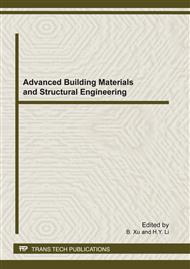p.666
p.671
p.677
p.682
p.686
p.690
p.695
p.702
p.707
Nonlinear Identification Approach of Nonlinear Constitutive Model of Soil Material with Optimization Procedure
Abstract:
Model identification of dynamic systems in the vibration engineering field has been followed with interest in recent years. A number of identification techniques on this topic are now available, such as parametric or non-parametric identification methods, time domain or frequency domain estimation approaches, etc. The identification approach of nonlinear constitutive model from input-output measurements is proposed. The inverse problem of material characterization is formulated as parameter identification problem that is solved by using optimization procedure. A set of parameters corresponding to the material property can be determined by minimizing objective function which accounts for experimental data and calculated responses of the mechanical model. The performances of the proposed identification approach were evaluated with simulating data. The effectiveness of identification approach is validated by numerical simulation. The investigation results show that the proposed identification algorithm poses good robustness and high identification precision.
Info:
Periodical:
Pages:
686-689
Citation:
Online since:
February 2012
Authors:
Price:
Сopyright:
© 2012 Trans Tech Publications Ltd. All Rights Reserved
Share:
Citation:


